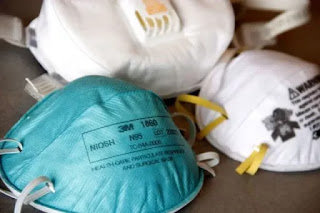Doctors have long discussed the pros and cons of a CT scan image over an Ultrasound and MRI.
Whereas CT scan images were easily made into 3D reconstructions with much better resolution of the structures. The problem being that CT scans were X-ray based and the radiation had a risk of causing cancer or damaging a developing embryo. Thus it was not safe for pregnant women to take a CT scan. Not to mention that CAT scans were expensive and required a huge machine.
Traditionally, heart ultrasound has relied on hardware “beamforming.” But this method is slow compared to the agility of software beamforming and limited to the finite amount of data it was originally built to handle in creating an image of the body. As a result, it often produces less detailed images and requires lengthy hardware redesigns.
The new software, called cSound, can collect a practically infinite amount of data to create an image of the human body. Rather than getting rid of the data it can’t process, which is what hardware does, the software stores it in the machine’s memory. GE’s engineering team developed algorithms that then process and analyze all of the data stored in the memory and cherry pick the best signals on a pixel-by-pixel basis.
While USG(Ultrasound) imaging is non-invasive and radiation free(thus safe even in preganancy), the images were always a slice or cross-section.
Crude attempts to use software to stitch multiple cross-sections into a 3D image were made, but were not very successful until recently. That led to 4D USG imaging of pregnant women to see what the babies look like.
Whereas CT scan images were easily made into 3D reconstructions with much better resolution of the structures. The problem being that CT scans were X-ray based and the radiation had a risk of causing cancer or damaging a developing embryo. Thus it was not safe for pregnant women to take a CT scan. Not to mention that CAT scans were expensive and required a huge machine.
MRI is also radiation free, BUT required much more precautions of removing all metallic and paramagnetic materials away. So they were not safe for anybody with a metallic implant or an accident or trauma patient with suspicion of a metal foreign body. No dental braces, no heart valves, no pacemakers, no screws, no artificial joints. Also, they were large machines, expensive and made a lot of scary noise due to the superconductors and supercooled magnets.
Ultrasound machines are small, portable and radiation free.
Now, GE has come up with an Ultrasound machine where the software can actually do 4D reconstruction(meaning 3D reconstruction in real time)
This is awesome as it helps the doctor to see the actual required image in 3D, withiut any of the risks of radiation and for much cheaper than a CT or MRI.
Vivid E9
Capture the entire heart in a single beat and integrate 4D imaging and advanced quantitative analysis into your daily routine.
Traditionally, heart ultrasound has relied on hardware “beamforming.” But this method is slow compared to the agility of software beamforming and limited to the finite amount of data it was originally built to handle in creating an image of the body. As a result, it often produces less detailed images and requires lengthy hardware redesigns.
The new software, called cSound, can collect a practically infinite amount of data to create an image of the human body. Rather than getting rid of the data it can’t process, which is what hardware does, the software stores it in the machine’s memory. GE’s engineering team developed algorithms that then process and analyze all of the data stored in the memory and cherry pick the best signals on a pixel-by-pixel basis.
The cSound software is so powerful that it can process an amount of data equivalent to playing an entire DVD in just one second, in real-time. Its inner workings were based on a combination of supercomputer data processing and the transmitters and receivers used in radar, seismology and WiFi communications. (Unlike CT or X-rays, ultrasound uses sound waves, rather than ionizing radiation.)
The team started developing cSound by looking at GE’s other 4D ultrasound system used for imaging a fetus during pregnancy. “It’s a similar algorithm, but there are some important differences,” says Erik Steen, the GE software engineer who helped develop the technology. “When you are doing 4D fetal imaging, you want to see the nice smooth surface of the skin. But cardiologists want to see differences in the heart tissue. So we built them color maps that can do that.”
Press Release : http://www.gereports.com/post/123998685620/now-playing-in-4d-your-heart
Press Release : http://www.gereports.com/post/123998685620/now-playing-in-4d-your-heart


No comments:
Post a Comment